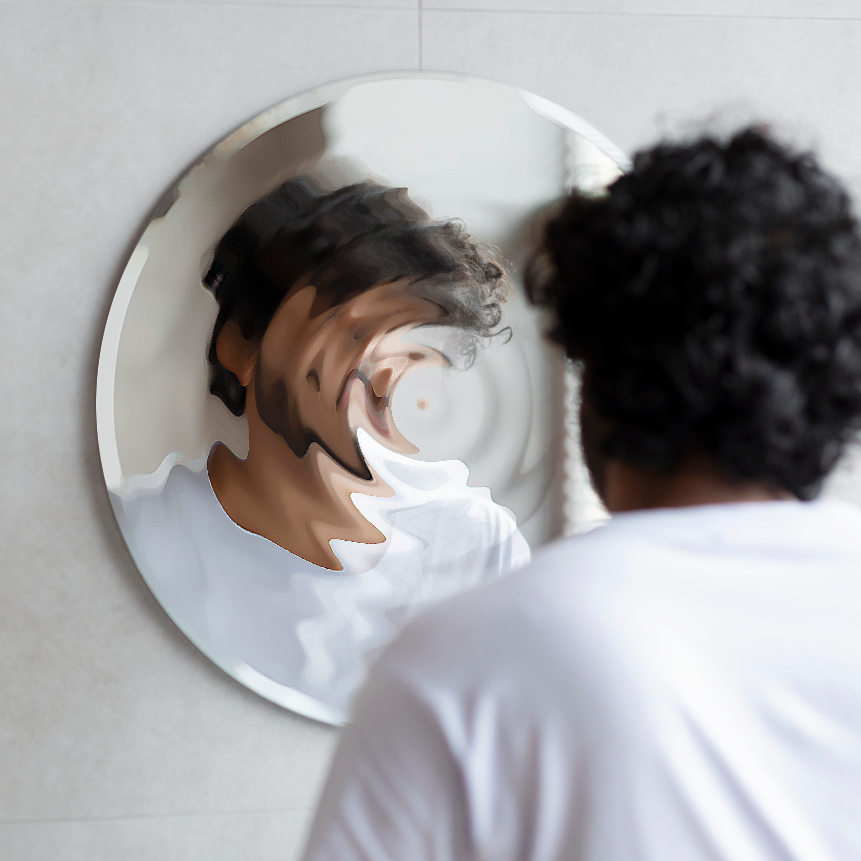
Key Symptoms of DPDR You Need to Know
Depersonalization-Derealization Disorder (DPDR) affects various areas of perception and experience. Those affected often report an altered view of themselves and their environment. This can manifest itself in a distorted perception of reality, in which the environment appears unreal, or in a feeling of alienation from one’s own body or thoughts. The processing of emotions can also be restricted, so that those affected feel emotionally numb or disconnected from their feelings. DPDR can also affect the perception of time and memory, which can have a significant impact on everyday life and quality of life.
Symptoms May Vary
It is important to know that the symptoms of Depersonalization-Derealization Disorder can vary from person to person and are often difficult to describe. If your own symptoms do not appear in the list, this does not mean that you do not have this disorder. If you have the impression that you are affected by DPDR and your symptoms affect your everyday life, it may be helpful to seek professional support.

Self perception
Depersonalization leads to profound changes in self-perception, affecting various aspects of one’s experience. Those affected often report an altered relationship with their body, describing it as if they are not truly inhabiting it. Some do not recognize themselves in the mirror or feel as though they are observing their body from an outsider’s perspective. Being in their own body can feel alien, and many experience a sense that body and mind are operating automatically, without conscious control. Some describe feeling as though they are trapped within their own consciousness.
The sense of belonging to the world also changes. People affected by this condition often describe feeling like characters in a movie or simulation, following a predetermined script or being controlled from the outside. At the same time, they may feel as though they exist in the world but are not truly a part of it.
Visual experience
Visual perception can change significantly in individuals with DPDR, contributing to a sense of alienation. Many describe perceiving the world as if it were seen through a glass pane or veil. Objects often appear either larger or smaller than they actually are.
Some experience their surroundings as extremely blurry or unnaturally sharp. In some cases, the world seems flat and two-dimensional, causing a loss of depth and perspective in perception. Additionally, the phenomenon of tunnel vision is common, where the field of view is narrowed, and only a limited portion of the surroundings is perceived in focus. These visual changes can intensify the feeling of unreality and significantly impact daily life.
Thought world
Those affected often suffer from distressing thought spirals that focus on their symptoms and their perception of the world. Repeated negative thoughts about their own situation often arise, such as the fear that their condition may worsen. Many worry about remaining permanently changed or never fully recovering from DPDR.
These concerns often lead to the belief that their experiences are due to a serious illness (e.g., brain tumor, dementia, Alzheimer’s) or a mental disorder (e.g., schizophrenia). There is often a constant urge to research the symptoms and search for explanations or solutions.
Existential questions may also arise, often related to the nature of reality. Those affected question whether the world is real and sometimes perceive it as smaller or larger than it actually is. They may develop thoughts that other people are acting like robots, merely following a script. Some experience the philosophical concept of solipsism – the belief that only their own mind exists – or feel that they themselves are not real.
Perception of time
In DPDR, the perception of time can be significantly altered. Many affected individuals feel that time passes either faster or slower than it actually does. Often, there is a sense that the world is moving faster than oneself, creating a strong imbalance between internal and external perception.
Additionally, some report losing track of time and being unable to remember what they did during a specific period.
Physical sensations
DPDR can trigger a variety of unsettling physical sensations that intensify the feeling of disconnection. Many individuals report pressure in the head or sinuses, often accompanied by the sensation that their head is filled with cotton or empty space.
Dizziness and a general sense of weakness throughout the body are common, sometimes accompanied by a heavy feeling in the limbs. Some individuals experience a burning sensation in the neck or back pain, which can further heighten discomfort. Additionally, tension in the eyes or sensitivity to light can make the environment feel unpleasant and overwhelming.
Other symptoms include tingling in the back of the head, along the spine, or in the fingers or toes, as well as distorted perceptions of limb size. Poor balance, tinnitus (ringing in the ears), and a general sense of bodily misalignment can make the state feel like a dream or surreal experience. While these physical symptoms are challenging, they are part of the broader experience of DPDR and often reflect the body’s response to stress or anxiety.

DPDR vs. Psychosis
Depersonalization-Derealization Disorder (DPDR) and psychosis are both conditions that involve altered perceptions of reality, but they differ in key ways. In DPDR, individuals feel detached from themselves or their surroundings, often experiencing the world as dreamlike or unreal. However, they maintain awareness that these perceptions are not accurate—meaning they don’t lose touch with reality. People with DPDR may feel as if they’re observing themselves from outside their body, or the world around them may seem distant and foggy, but they know these sensations are temporary and not actually real. In contrast, psychosis involves a true break from reality, where individuals experience hallucinations (seeing or hearing things that aren’t there) or delusions (strongly held false beliefs), and they are often convinced that their altered perception is real. The critical distinction is that DPDR does not involve a loss of reality — the person experiencing it can still recognize that their perception is distorted, unlike in psychosis, where the person believes their altered perceptions are true.
Sharing Personal Journeys
At this point, individuals share their personal experiences to give others insight into their stories.
“For several months now, I have felt as though everything around me is foggy and unreal, like I’m stuck in a haze I can’t escape. Earlier this year, it was much worse — so intense that social events felt like swimming through thick fog, leaving me disconnected from everyone around me. While it has improved somewhat, the sense of clarity hasn’t fully returned, and I still don’t feel truly present in my own life.”
“I often feel trapped within myself, disconnected from my surroundings, and anxious when trying to focus. Relaxation feels impossible, and even seeing through my own eyes feels strange — almost as if my vision is through cameras rather than my own. Sometimes, I question my identity, feeling like I’m in a first-person video game, which only adds to my unease.“
“It was perhaps the most challenging and abstract experience I had ever endured. I felt as though I had become a character in an H.P. Lovecraft novel, teetering on the edge of reality. Familiar environments, including my own bedroom, appeared strange and alien. My reflection in the mirror became unrecognizable, and even my parents seemed like illusions or mere figments of my imagination..“
A Visual Journey into Dissociation and Detachment
The following images aim to visually capture and represent the often disturbing and elusive experiences of DPDR.

Trapped in a Tunnel
Picture being compelled to see the world through a tunnel. The focus narrows sharply, and the surrounding world dissolves into a haze of blurriness. Everything feels remote, as though you’re peering through a window that allows only a restricted glimpse of reality.

Lost in a Flat World
Imagine stepping into a world where and the space loses its depth. The familiar image of your surroundings transforms into a flat, almost surreal representation – a 2D universe that has lost its third dimension. No space, no perspective – just an endless plane.

Living from the Outside
Imagine literally seeing yourself from a distance, as if you’re watching your own body move and interact with the world. In this third-person view, you observe your actions, gestures, and expressions from an external perspective, disconnected from the experience. It feels like you’re floating above or behind yourself, watching your life unfold without being directly involved.

The Vanishing Reflection
Visualize standing in front of a mirror, but when you look into it, you can’t see your own face. The reflection is distorted, as if a fog or a blur prevents you from making out any details. No matter how much you focus, the image remains unsettlingly unclear. Your features shift and twist, disappearing into the distortion, as though you’re trapped behind a veil, unable to reconnect with your own reflection.